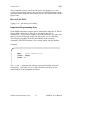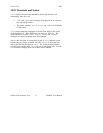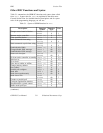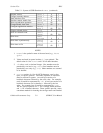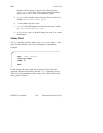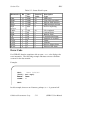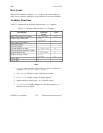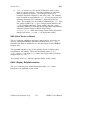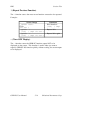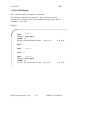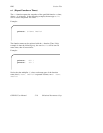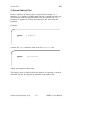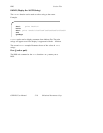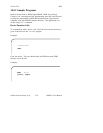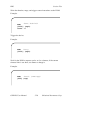Section Five IBIC
©National Instruments Corp. 5-13 GPIB-PC User Manual
6. string consists of a list of ASCII characters, octal or hex
bytes, or special symbols. The entire sequence of characters
must be enclosed in quotes. An octal byte consists of a
backslash character followed by the octal value. For example,
octal 40 would be represented by 040. A hex byte consists of a
backslash character and a character x followed by the hex
value. For example, hex 40 would be represented by x40. The
two special symbols are \r for a carriage return character and
\n for a linefeed character. These symbols provide a more
convenient method for inserting the carriage return and linefeed
characters into the string as shown in this string:
"F3R5T1\r\n". Since the carriage return can be represented
equally well in hex, \xD and \r are equivalent strings.
SET (Select Device or Board)
The SET function specifies a previously opened device or board to be
used for subsequent GPIB-PC functions executed from IBIC. SET
eliminates the need to include the BD unit descriptor in each GPIB-PC
function call.
The argument bdname is any of the symbolic device or board names
recognized by the handler. These are the default names gpib0,
gpib1, and dev1 through dev16 unless the device names have been
changed with IBCONF.
An example of the SET function appeared earlier in this section.
HELP (Display Help Information)
The HELP function gives causal information about IBIC and its
functions to be displayed on the screen.



